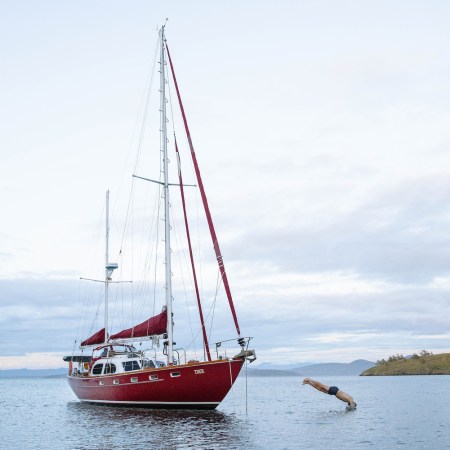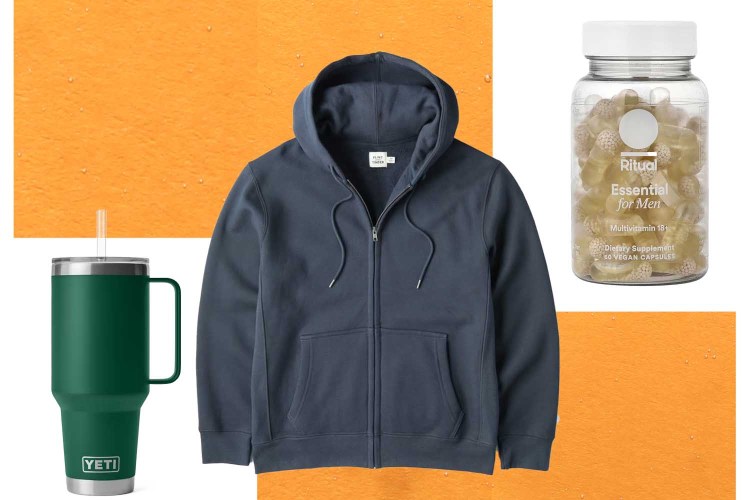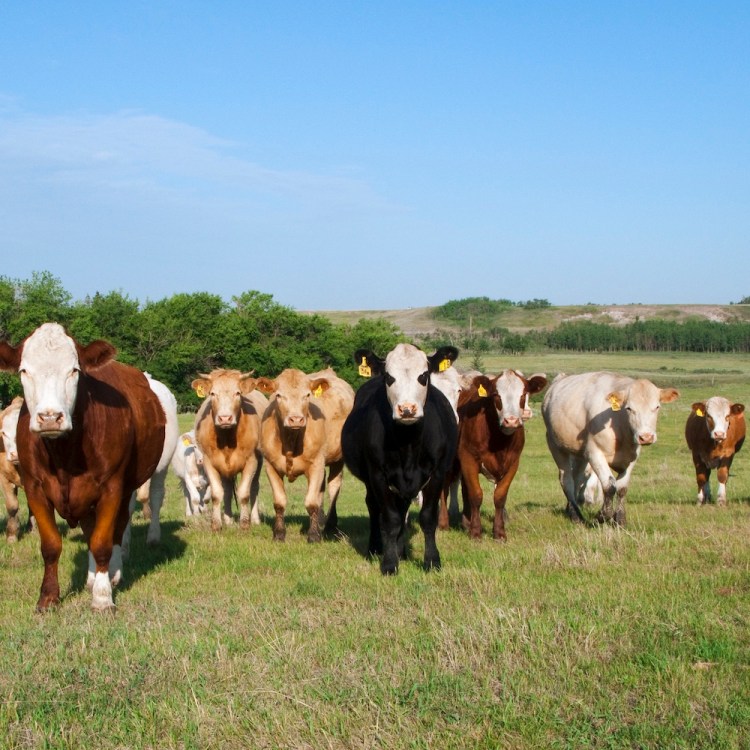Kawa Mawlayee was born in Afghanistan, where his father served in Afghan forces for years before dying in a firefight with the Russian army.
After his family immigrated to the United States, Mawlayee enlisted in the Marine Corps, where he served for five years before joining the elite Army Green Berets. It was there that he served for 16 years, as the first and only Afghan-American Green Beret in the history of the Special Forces.
Now retired from the military, Mawlayee conducts firearms courses with his company 2Alpha Training Group, as well as consulting on product research and development. On occasion, he’s brought on to advise military-themed productions in their portrayal of combats and the conditions of modern warfare.
This was recently the case for Guy Ritchie’s The Covenant, an action thriller about a Green Beret soldier who tries to help the local interpreter who saved his life during an ambush in Afghanistan. Understandably, the story hit close to home for Mawlayee.
We spoke with Mawlayee about being a Green Beret, the training that he did as a special forces soldier and how he tried to impart those lessons on the set of The Covenant.
What drew you to military service, and eventually to the Green Berets of the U.S. Army?
I was born in Afghanistan, and my father’s side were all in the Afghani army, until they joined the Mujahideen to fight against the Russian army. Before we immigrated into the United States, my father was killed in a firefight with Russian forces. So in addition to feeling like the military was in my blood because of my father, I felt grateful for our new lives in America. I wanted to serve. I started in the Marines, but after five years I felt like there might a better place for me.
The more that I heard about the Green Berets, the more interested I became. I believe they have the best mission set out of all the other Special Operations units. They are jacks of all trades, with a specialty in unconventional warfare. So after a short break after the Marines I decided to try to make it in. I knew that even if I didn’t make it in I would be put into a conventional infantry unit. But in the end, I made it into the 5th Special Forces Group.
The Legendary Green Beret Who Lives Like a Modern Samurai
Tu Lam, the man behind Ronin Tactics, on waking up and preparing to dieAs I’m an Afghan and Muslim, being able to speak the language made me an asset. Thanks to that background there were experiences that I got to have that a lot of Green Berets don’t. I also felt a responsibility to share my insight into Middle Eastern cultures to the other Green Berets that I served with. Given that the Green Berets work especially close with our host countries, I was able to vet our counterparts and build rapport with them on account of my background.
How did you train in the Green Berets? Was it unique to you as a force?
For us in the Special Forces, our workout plans depend majorly on that mission set for the team. In one Special Forces company you can have a Mountain team, a Direct Action team, a Scuba team or HALO team. Each of those missions have an essentials list that mandates certain tasks and proficiencies be met by all members of the team. When it comes to fitness, it’s about a soldier’s ability to pass the Army’s PFT, or personal fitness test, with a high enough score. For us as Special Forces soldiers, we needed to pass that PFT with a 290 out of 300. That score is a very high one for someone in the conventional Army units, but for us in the Special Forces, it was a minimum.
Beyond that, whatever fitness plan a team of Green Berets are on depends on that team’s mission set. For example, members of a mountain team may spend 85% of their workout plan solely on lower body, endurance and stamina. Since these mountain teams are supposed to be specialized in mountain terrain, they need to be very strong when it comes to climbing, descending, scaling, and surviving in those environments. That means in all weather conditions.
Where were you doing the majority of your training when you weren’t deployed?
I was at Fort Campbell, which is on the border of Kentucky and Tennessee. Fort Campbell has somewhere around seven or eight gyms. Every unit has their own gym, and we would go to another unit’s gym if they had better equipment or were newer. Every base that I’ve been to with the Army has a ton of gyms. Fort Bragg has somewhere around 10 gyms. But for the most part, as Green Berets we would train outside and in the elements as much as possible. I would say that about 75 percent of the training that we were doing was outside in some way.
For the gym sessions, we would pick routines for ourselves. Most of the days it was just me and a buddy deciding whether we wanted to do biceps and back or chest and triceps. Or whatever other combination we hadn’t done in awhile. There were also days that we would just do cardio, whether that was pushing or pulling a sled and getting on the elliptical. There were a lot of guys who would also go to the pool for a while.
How about for that 75 percent that you were doing outside?
For the climbing, there was a climbing location that we would go to called Queen’s Bluff, which was a cliff face by the Cumberland River in Clarksville, Tennessee. We worked it out with the city where we were able to set up climbing equipment and rappel there. It was a pretty remote area, so there weren’t too many people that we would run into. There were signs set up that said not to trespass, as the property was set aside for Fort Campbell. One of the great things about being based in Tennessee is that it’s full of rolling hills, so there was plenty of terrain for us to smoke and gas ourselves out. We had room for all kinds of unique training.
The morning sessions would include hikes, sprints, and rucks with a 80-pound rucksack. If we wanted to be around some natural mountains we could just drive a couple hours south to the Appalachian Trail. Sometimes we would train with all of our gear on and other times we would do it slick. If there were guys on the team who hadn’t done any kind of training without their gear on, we would make sure we did just so they knew what it was like. There isn’t necessarily a test that they need to do with the gear, or a box that they need to check, but for us, it’s necessary to know that they can handle themselves out there.
What kind of weapons were you were operating with when you were part of a mountain team in the Green Berets?
The team would rock the standard M4 with all of the bells and whistles. Every team has their own armory filled with specialty weapons. I had my 10 1/2 -inch M4 with my go bag. On most missions I would also carry this 18-inch SPR, or special purpose rifle, that I could use to scope out situations at a distance. I used that rifle as my primary, because in Afghanistan a good number of the fights that we would get into started off at a good distance. But once we closed the distance I would move to my M4 shorty. That’s how most of us Special Forces guys are, we would have one gun, but throw another one in our bag just in case.
For training purposes we would usually just stick with the M4s, because we didn’t want to make it overly complicated when we were doing things for the first time. The last thing that you want is to make a mistake and fuck up a $10,000 SPR. Because it’s a longer barrel and a real scope instead of just a red dot, the SPR would be a few extra pounds over the M4. There are also sniper systems we have, which can run anywhere between $20,000 to $30,000. Those were only brought out when we really needed to utilize them for long range.
Sounds like you had the perfect experience to be the military advisor for Guy Ritchie’s The Covenant, given you were in the Green Berets and Jake Gyllenhaal plays a Green Beret. On top of that, Dar Salim plays an Afghan interpreter, and you would have been in close quarters with a few. How did you end up working on the movie?
I started working on these kinds of projects after I left the Special Forces. I had a friend who was connected in that industry and brought me in. The first larger project that I was involved in happened to be the motion capture work for the video game Star Wars: Battlefront II. So while what we were doing was based around typical military behavior, it was far from the modern or present day experience. My first time working on a major motion picture was for Adam McKay’s Vice, when I did the battle choreography for a scene with Christian Bale and Steve Carell. I even appeared in the movie.
These days I still train and do firearms courses, so when people are looking for someone capable to help on projects like this my name gets passed around. I had a friend who reached out to me about this movie, and when I heard that it was with one of my favorite directors, Guy Ritchie, I knew I was in. The next thing I know I’m catching a plane to Spain for the next few months. I met with Guy for the first time after I got to Spain.
I was intimidated the first time, because he’s someone whose work I really respect. I didn’t know if he was going to be one of those guys who wanted me to speak only when talked to or even if he wanted me in some far off corner away from the action. But one of the things that I saw right off was that he was very happy to have me as involved as possible. He knew that it was his first real military movie, and he wanted the action to look right. Not only him, but his whole team gave me the ability to make real adjustments when I decided they were necessary.
How about the gear that you guys were kitted out with during the production?
There were a few pieces that we were working with that weren’t necessarily modern. That’s because we had trouble getting everything we wanted, but in the end it worked out fine. We were helped out by the fact that when you look at a Special Forces team we are pretty rag tag. Not all of the guys are going to have the newest and coolest gear, because they might have pieces that they prefer instead. They guys who played the soldiers had Suunto and Garmin watches and Salomon boots, which we all kept. For my weapon I was running a M14, which was the only sniper system they had in the Spanish armory. I spray painted it, added a scope, and a few other attachments to make it feel right.
What was it like working with the actors?
I was linked up with Jake and Dar from day one, hour one. The production was fast paced. My first week there we set up a few training days where we went over some basic movements. They both had skills already from previous experiences, to differing extents. But everything about how us special forces guys carry ourselves overseas is just a bit different to conventional soldiers. I got three real days to convey what I needed. We were driving the vehicles around the production headquarters, practicing how we would move during an engagement, using them for coverage.
During those training days we did weapons handling, movement, and communication. There was also just a lot of time I just sat with them to explain what a SFOD-A, (a special forces operational detachment alpha) actually does. Jake’s character has this additional responsibility of being the leadership in that team, so as an actor he also has the responsibility to portray that. The dynamic between the soldiers onscreen is what really mattered most, because that’s what they really need to sell to the audience. I know they were capable enough already to move the weapons around, but we really focused on making the team chemistry come together.
For us on SF teams, we are so chill when we are together. We don’t really call each other by our ranks. On the rare times we do, it’s the officer on the team that we are addressing. In that case we may say, “Hello sir.” Even if they wanted me to call them by their name, I couldn’t get past that. The officers are in charge of us, but they aren’t really one of us. My conversations with Jake were all very casual, it felt like we were buddies from the beginning. He had the right mindset pretty early, and from there it was just little nudges here or there. The project was really great, and Guy did a great job of allowing me to make it as authentic as possible.
The Charge will help you move better, think clearer and stay in the game longer. Subscribe to our wellness newsletter today.


























